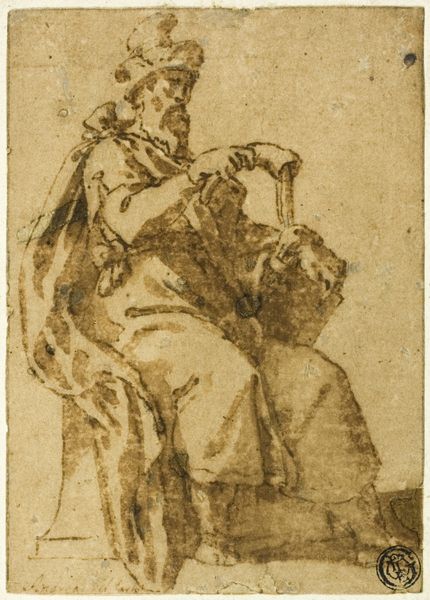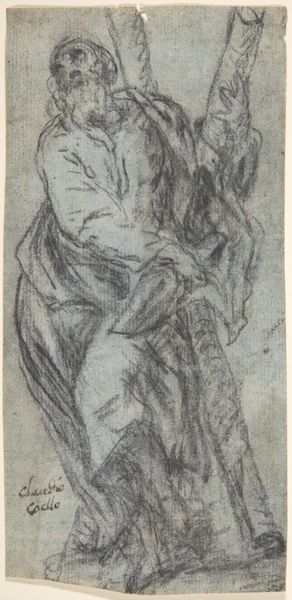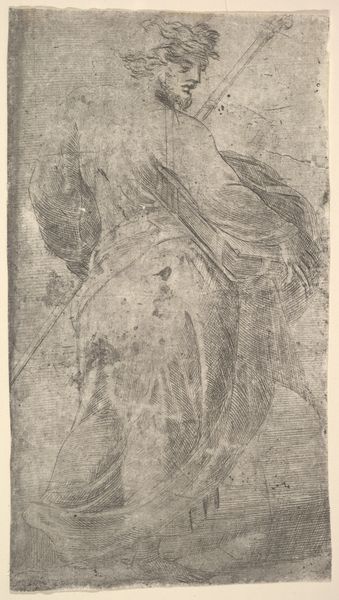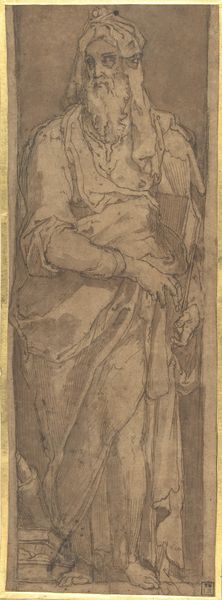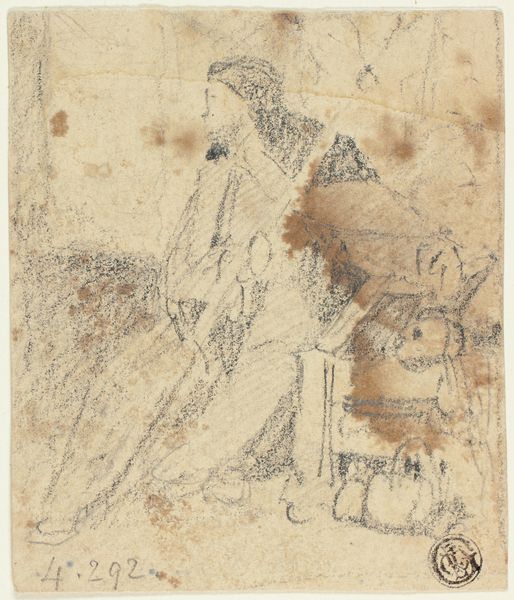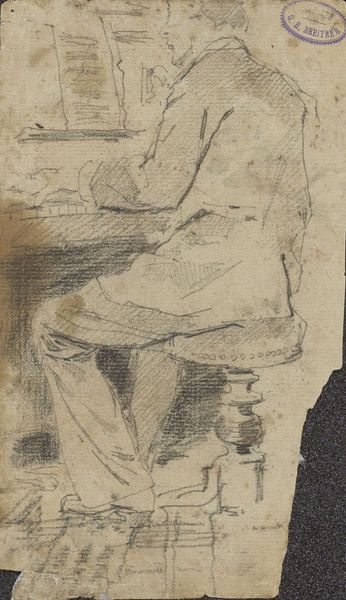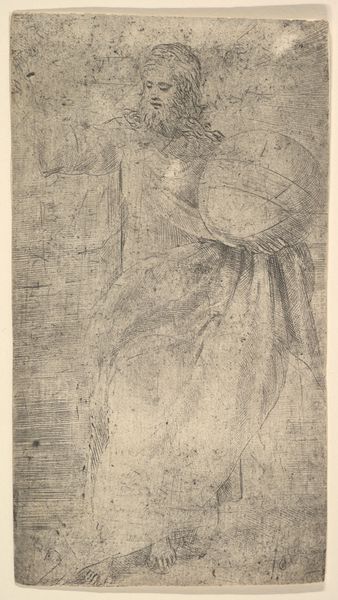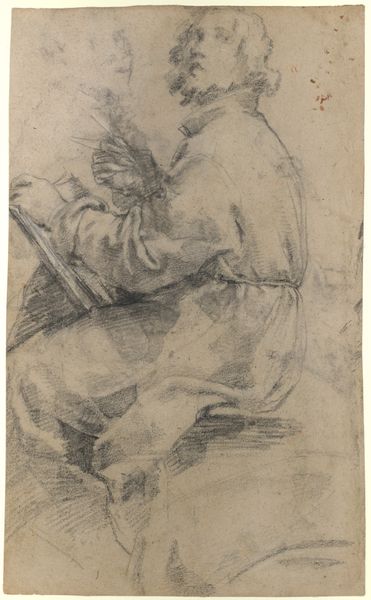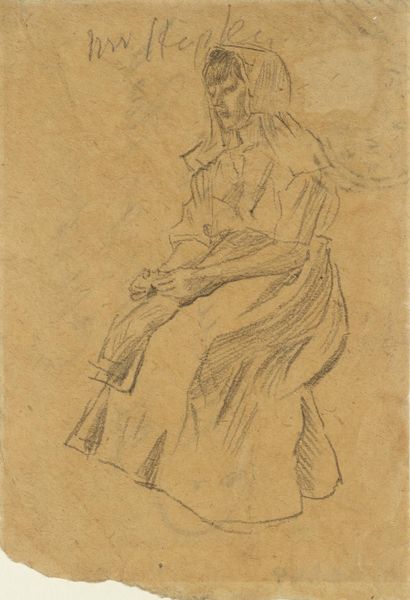
drawing, paper, charcoal
#
drawing
#
baroque
#
pencil sketch
#
charcoal drawing
#
figuration
#
paper
#
charcoal
Dimensions: height 152 mm, width 128 mm
Copyright: Rijks Museum: Open Domain
Editor: Here we have Gaspar de Crayer's "Draperiestudie en een hand," dating sometime between 1584 and 1669. It's a charcoal and pencil drawing on paper, currently held at the Rijksmuseum. It’s… well, it's a study. How should we approach appreciating this kind of work? What details do you find particularly important? Curator: For me, the allure is in the raw materiality and process. Forget the idealized final product for a moment; let’s focus on what this drawing tells us about artistic labour in the 17th century. The paper, the charcoal – these are the raw materials of image production. Editor: So you’re less interested in what the drapery *represents*, and more in the act of representing it? Curator: Exactly. Look at the hatching, the smudging. These aren't just techniques; they’re evidence of de Crayer's physical interaction with his materials, with the demands of his patrons, even. Drapery, after all, wasn't just aesthetic; it signaled wealth, status, access to certain fabrics and dyes. What did it mean for artists like de Crayer to reproduce this for public consumption? Editor: So, we're considering this less as "high art" and more as a commodity, a product of a certain socio-economic structure? Curator: Precisely. The ‘Drapery Study’ in itself can also show us an emphasis on the process that allowed an artist like de Crayer to reproduce the appearance of luxury, making the material aspects and means of labor within artistic creation more readily viewable. It's less about the beautiful artwork as a whole, and more about labor that went into producing that kind of material beauty. What does that perspective offer you? Editor: That definitely gives me a new way to think about this piece, one that takes into account a different kind of beauty, a more realistic one tied to craftsmanship and social commentary. Thank you!
Comments
No comments
Be the first to comment and join the conversation on the ultimate creative platform.
